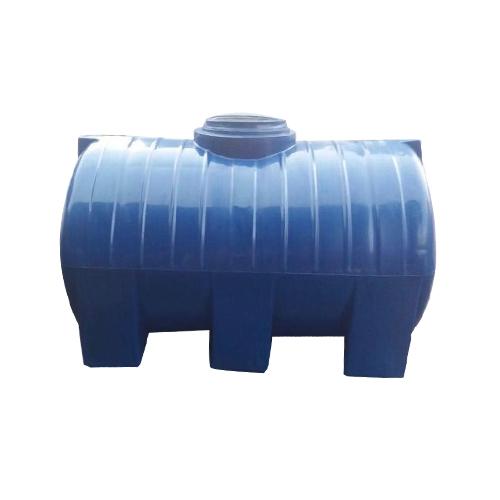How to Choose the Top-Level Lining of Water Storage Tanks

Water storage tanks are pivotal in delivering water for farming, industrial, and domestic purposes. The tank's integrity is vital to guarantee that the stored water is safe and contamination-free. One of the most vital elements in having a credible water storage system is the lining within the tank. When selecting the proper lining for a water storage tank, the durability of the material, its leak resistance, and capacity to endure numerous environmental conditions are all critical factors to consider. Dam liners, for instance, are created to be able to resist the pressures and conditions that come with large-scale water retention. Still, numerous considerations exist when choosing the optimal lining for your application.
Why Proper Lining Is Important for Water Storage Tanks
Water storage tanks experience various stresses based on size, location, and applications. If the tank liner is not strong or compatible with the conditions of the surrounding environment, it may cause leaks, contamination, or deterioration of the stored water. A good-quality liner prevents water from being contaminated and makes it safe for consumption, use in irrigation, or any industrial processes. It also guards the tank's structural integrity, prolonging its lifespan and minimizing maintenance expenses.
Essential Considerations When Choosing a Lining
Material Durability
The durability of the material used for the tank liner is a determining factor in its longevity and functionality. Water tanks are subject to adverse environmental conditions, including UV exposure, extreme temperatures, and chemicals. Consequently, it's critical to select a long-lasting material that is resistant to wear and tear. For instance, liners made of high-density polyethylene (HDPE) or reinforced polyethylene are widely used due to their resistance to UV degradation, punctures, and tears.
Chemical Resistance
Various uses of water storage tanks may require the storage of water with chemicals, fertilizers, or other compounds. Selecting a liner that resists chemical reactions is important to avoid lining damage and contamination of the water stored. Materials such as PVC, for example, are highly resistant to a broad variety of chemicals and are widely used in agricultural usage. Ensure you choose a material compatible with the chemicals or compounds you intend to store in your tank.
Leak Prevention
One primary purpose of installing a liner in water storage tanks is to prevent leakage. Leaks may cause water loss, contamination, and harm to the environment. The material used when choosing a liner must seal the tank to prevent water from passing through it. When installed correctly, water tank liners create an airtight layer that eliminates the chances of leaks. Additionally, liners with welded seams or heat-sealed edges are more effective than those with stitched seams, as they provide better leak resistance.
Ease of Installation
Another factor is the ease of installation of the liner. A complex installation process can raise labour costs and lead to delays. Select liners that are easy to install, ideally featuring pre-welded seams or clear, easy-to-follow installation instructions. The best liners are available in custom sizes, but they are also packaged in rolls that can be cut to the desired tank size for your convenience. The installation becomes easy, saving both time and ensuring the liner is correctly fitted to yield maximum performance.
Cost-Effectiveness
Although durability and performance are essential, the liner's price must also be taken into account. Better materials can be more expensive upfront, but pay dividends in the long run by minimising maintenance and replacement requirements. It is worth considering the upfront cost of the performance and longevity of the liner. Over time, investing in a higher-quality water tank liner will pay off by eliminating problems such as leaks and contamination.
Environmental Factors
Lastly, consider the environmental implications of the liner material. Some liners are recyclable, while others are not environmentally friendly. If sustainability is your primary concern, consider liners made from environmentally friendly materials that will not harm the environment if they need to be replaced.
Advantages of Utilising a Good Quality Water Tank Liner
Investing in a high-quality water tank liner guarantees that your storage system will be long-lasting, efficient, and economical. Quality liners offer leak protection, minimise the risk of contamination, and increase the tank's lifespan. Furthermore, using a well-fitted liner guarantees that your water is safe for drinking, irrigation, or industrial use. Whether you want to install a new tank or maintain an existing one in good condition, selecting the correct liner is crucial for optimal performance.
Conclusion
Selecting the proper lining for your water storage tank is crucial to ensure its efficiency and longevity. Whether considering dam liners for large-scale projects or a more tailored water tank liner for smaller applications, paying attention to the material's durability, chemical resistance, leak prevention capabilities, and ease of installation will ensure your tank operates smoothly. Be sure to consult with an expert to determine the most suitable lining material for your specific needs, as making the right decision can significantly impact your water storage system's overall efficiency and cost-effectiveness.
- Art
- Causes
- Crafts
- Dance
- Drinks
- Film
- Fitness
- Food
- Juegos
- Gardening
- Health
- Inicio
- Literature
- Music
- Networking
- Otro
- Party
- Religion
- Shopping
- Sports
- Theater
- Wellness


